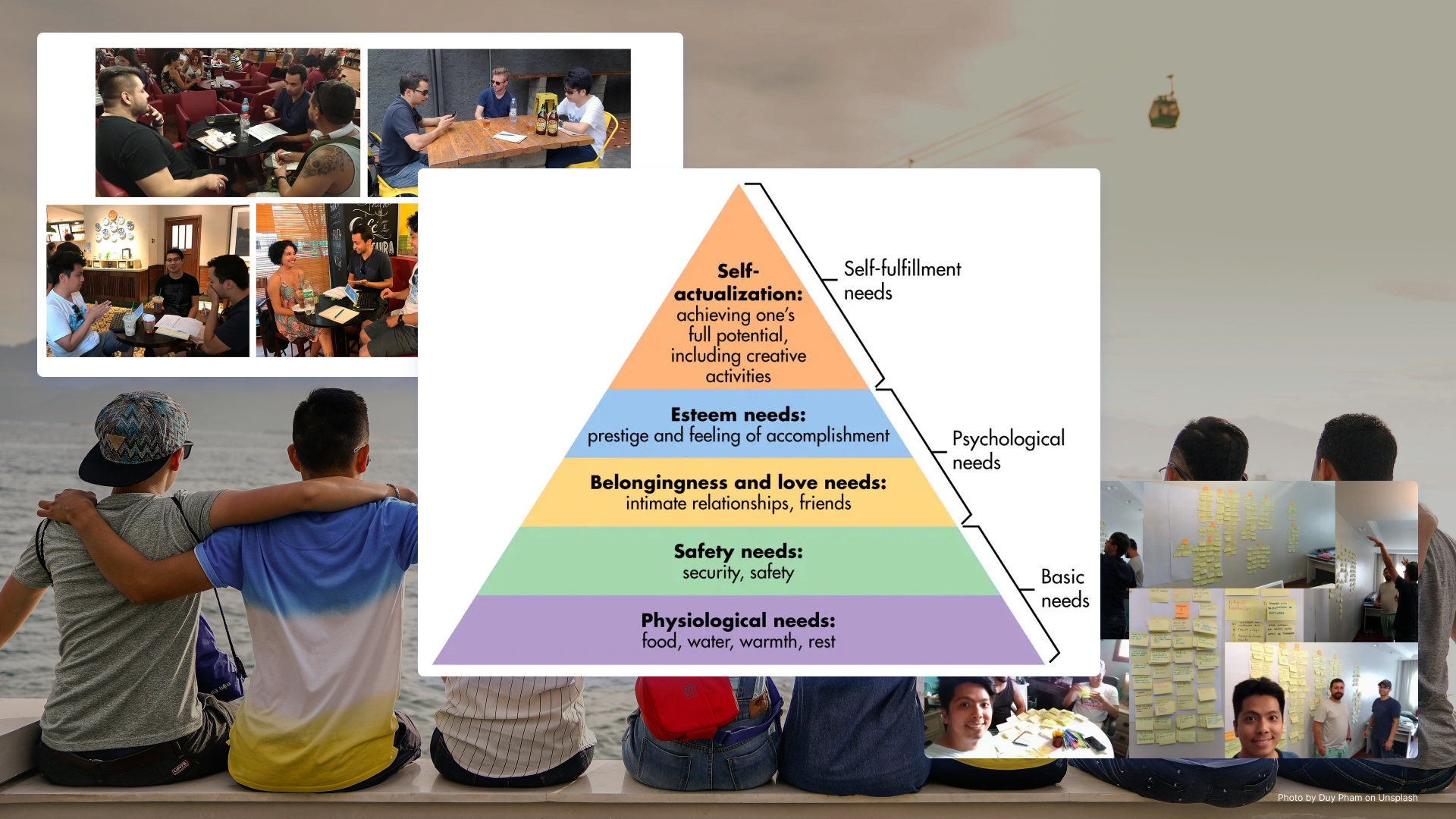Proto-Personas and Personas: a guide to User-Centered Design
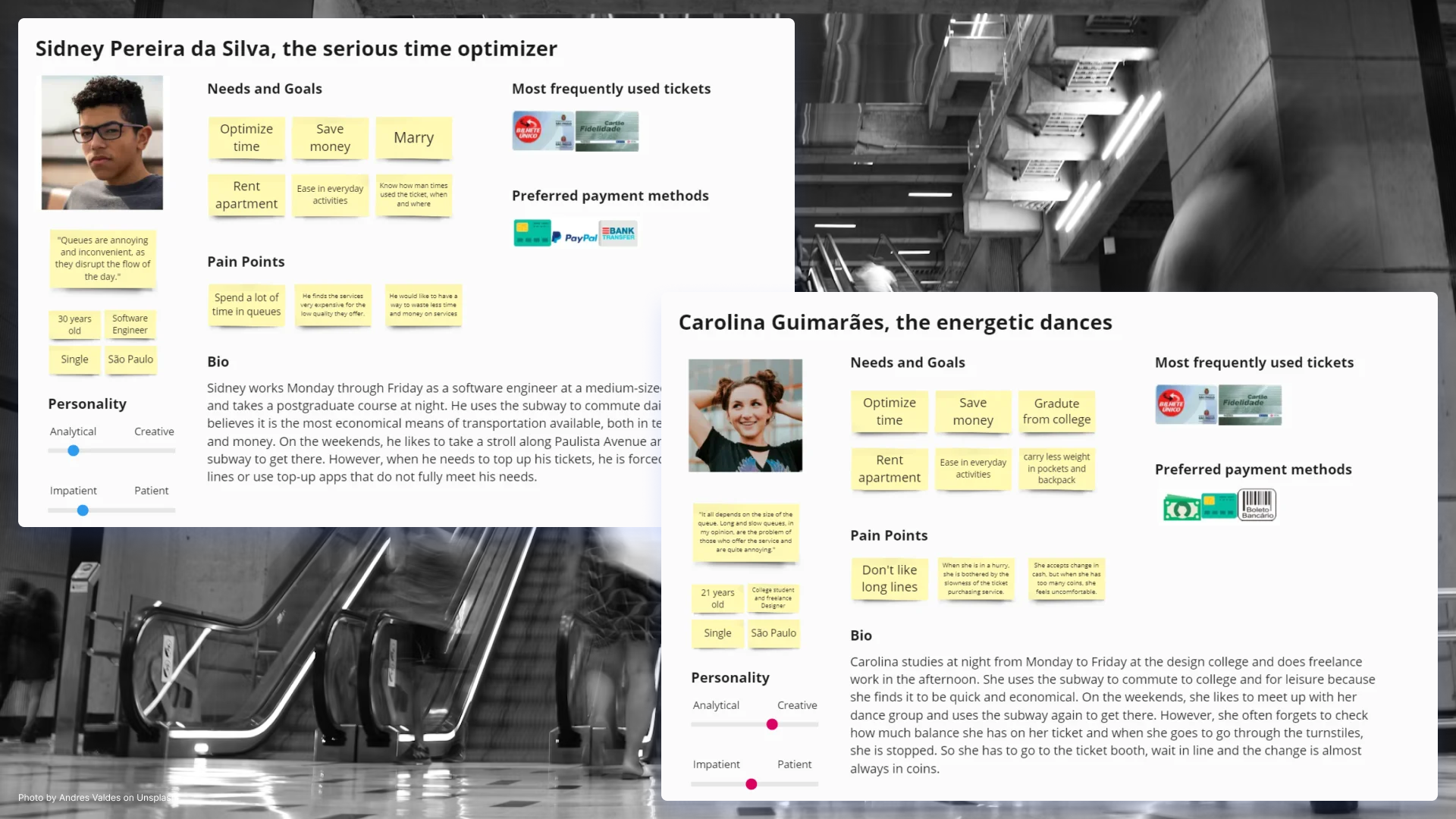
Introduction
This article outlines the process of creating proto-personas and personas for the public transportation project. Proto-personas serve as initial hypotheses, while personas represent detailed user profiles. Through interviews and a questionnaire, I gathered insights into user needs and preferences. These findings helped validate initial assumptions and inform the development of personas, ensuring they accurately reflect the target audience.
Proto-Persona
With the information contained in the 360º View diagram that we created earlier, we can start to create our proto-personas.
The proto-persona is a simpler variant of the persona and is used as a workaround for the common persona. However, like all workaround solutions, it is not effective and it is highly advisable that the hypotheses raised in the proto-persona be validated later with real users. For the proto-personas that I created, I considered the following information:
- Who the user is and their personality
- Some of their behaviors
- Their demographic information
- Their needs and goals (⚠️ important!)
Since the proto-persona is just a hypothesis, I based it on my experience of public transportation and the people I casually chatted with during my daily commutes between home and work and vice versa.
Proto-persona: Gustavo Econosilva

In a single paragraph, the proto-persona Gustavo Econosilva is a 30-year-old worker who is always in a hurry. Gustavo works on weekdays and likes to go out on the weekends. He always tries to save both time and money and intends to start a postgraduate degree in personal finance.
Proto-persona: Josie Bateperna
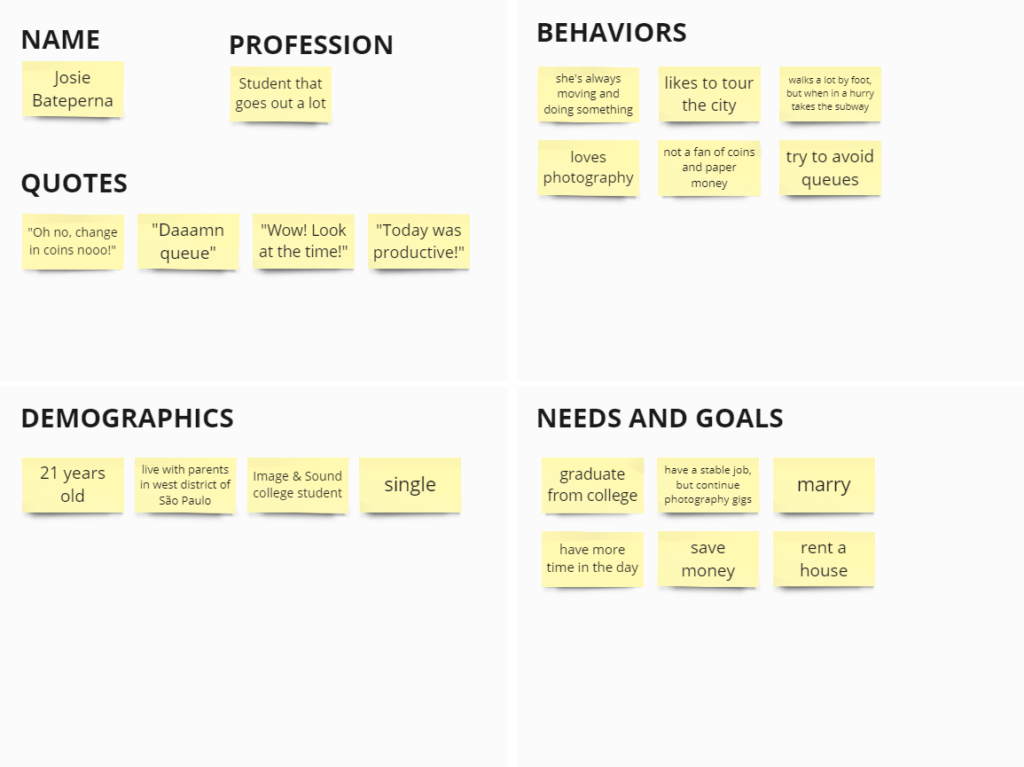
In a single paragraph, the proto-persona Josie Bateperna is a 21-year-old student and freelance photographer who likes to go out a lot around the city of São Paulo. Josie is always doing something and since she is always on the move, she doesn’t like carrying coins or a lot of paper money because of the volume they make. She tries to avoid lines and intends to graduate from college and have more time in the day.
Interview Script
You could ask me “Why didn’t you go straight to the personas?” That’s a great question! I preferred to create the proto-personas because once you have generated the hypotheses, it is easier to create the interview script, that is, what questions should be asked in order to get the answers the project needs to move forward.
So, I created the script with the following questions:
- How much time do you spend on public transportation every day?
- How important is time in your daily life?
- Do you work, study or both?
- How often do you usually top up your transport ticket?
- What do you think about waiting in lines to buy/refill your ticket?
- What would you think if the ticket booth only gave you change in coins?
- Suppose the ticket booth didn’t have any change for you. What would you think if they asked you to wait nearby for your change?
- How much do you estimate you would spend per month, in Brazilian Reais, just on transport tickets?
- How often do you use the Metro/CPTM for leisure on weekends?
- What would you think if you could refill your ticket whenever and for as long as you wanted on your cell phone?
- What would make you refill and check your ticket on your cell phone instead of going to a subway station?
Research
My intention was to conduct the interviews at subway stations that had a bus terminal nearby. However, I found that there were too many questions to ask, since people are always in a hurry in these places. So, I took all these questions and created a questionnaire on Google Forms to get answers from people who usually use public transportation in their daily lives and on weekends.
I understand that the questionnaire is a way to obtain quantitative data, but I also wanted to cover qualitative data and decided to choose, from the questionnaire, only the questions that I thought would be most relevant to obtain qualitative data. Like this:
- How much time do you spend on public transportation every day?
- How important is time in your daily life?
- Do you work, study or both?
- What do you think about waiting in lines to buy/refill your ticket?
- What would you think if you could refill your ticket whenever and for as long as you wanted via your cell phone?
These questions were chosen to find out how people would respond to them in terms of facial expression, body language and tone of voice. This information is very important to guide the project in order to meet the needs of users as much as possible.
Because some of the questions in the questionnaire answer business questions, to find out how to structure the project’s profitability, I decided not to cut them from the questionnaire and only keep the ones I chose for the interviews.
The results helped me validate the hypotheses made in the proto-personas, and some hypotheses proved to be wrong, such as the one about carrying coins. Not all users mind carrying a few coins, only when there are a lot of them. I imagined that no one liked carrying coins. That’s the advantage of researching and interviewing real users.
Personas
I won’t go into details about how to create personas, because there are many different ways to create a persona and none of them is more correct than the other, since everything depends on the project. So, what matters is to create personas that make sense within the context of the project. So, I’ll just explain you how I proceeded to create the personas for the project in question.
With the results of the quantitative research and interviews in hand, we can create our personas. To do this, we must analyze the results, always thinking about the motivations that guide the users’ behaviors, transforming these motivations into objectives.
Persona: Sidney
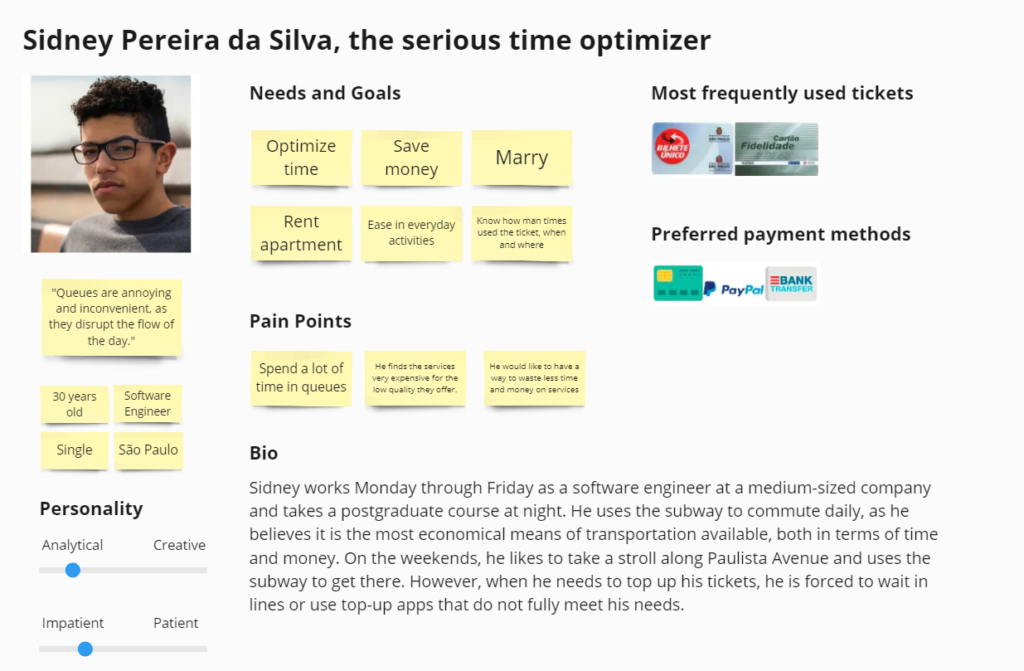
In a single paragraph, Sidney represents the most demanding user who considers his time very important and, as he is more analytical and impatient, tries to optimize it as much as possible and does not like lines at all. He considers that practicality and agility of services are essential for a good experience. He prefers electronic payment methods (card, PayPal and Internet banking).
Persona: Carolina
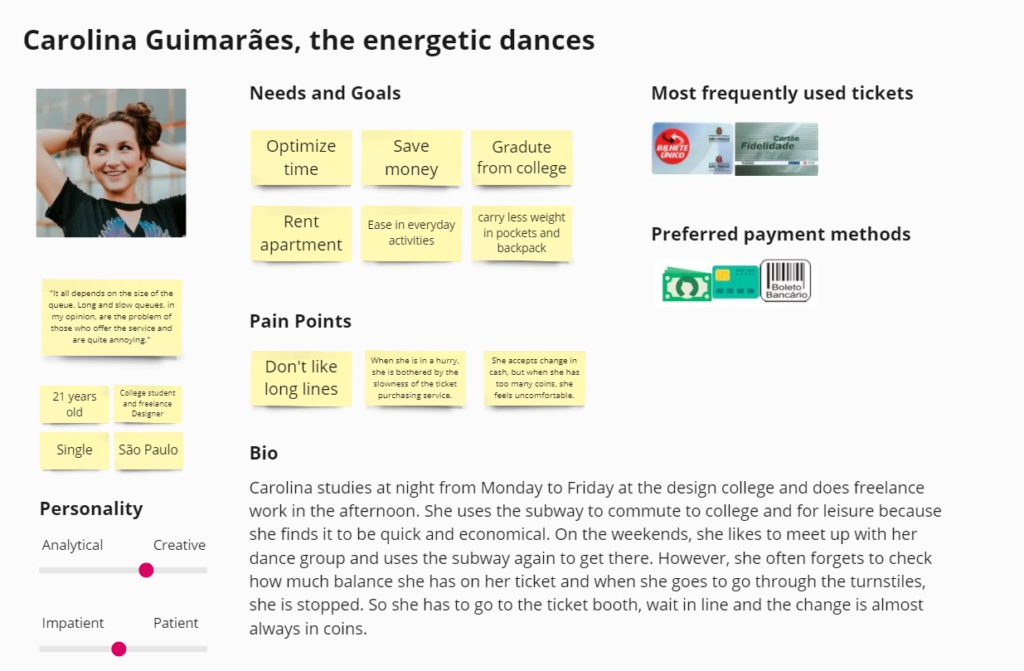
In a single paragraph, Carolina represents the user who is a little more tolerant of lines and changing coins. She also tries to optimize her time, but is not as demanding as Sidney. She likes to have comfort and agility while commuting and likes to get to places without stress. She uses more traditional payment methods with cash, card and bank slip.
Conclusion
In conclusion, this article demonstrates the importance of creating proto-personas and personas for understanding user needs in a public transportation context. By conducting thorough research and analyzing the results, I was able to develop accurate and insightful personas that will guide the project’s development. These personas will help ensure that the final product meets the needs and expectations of the target audience.





